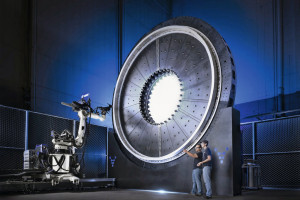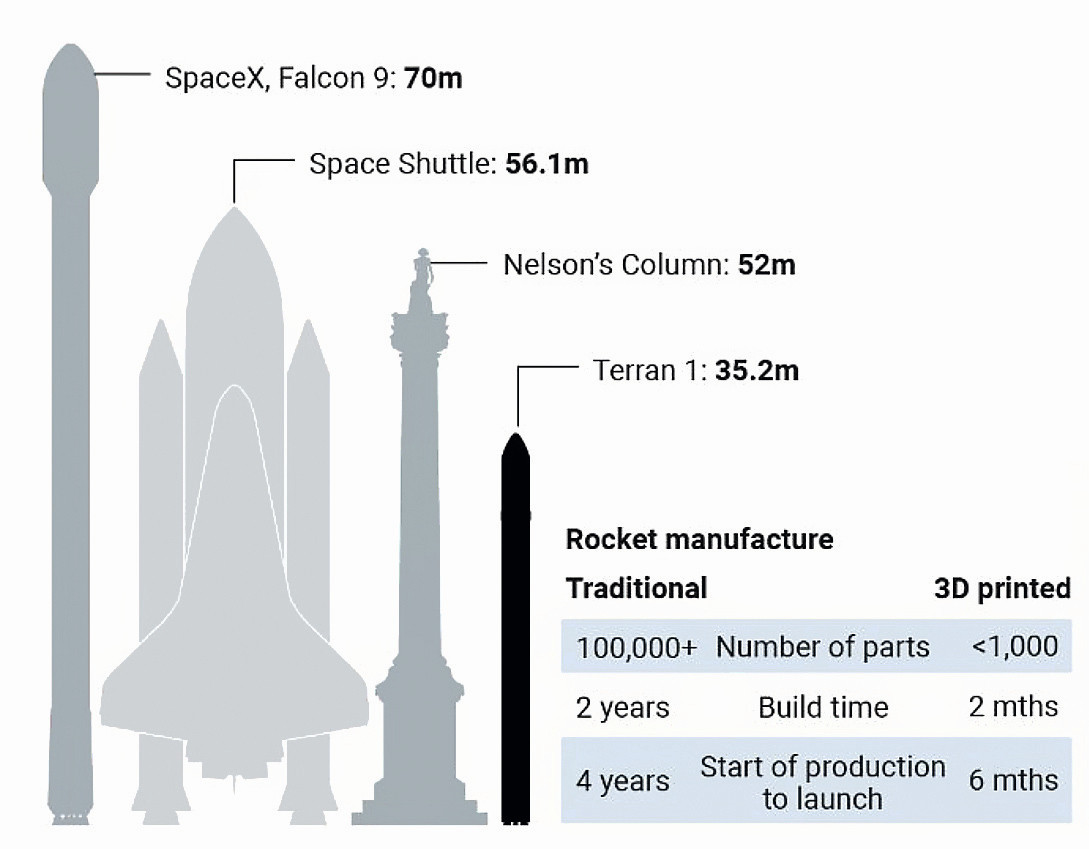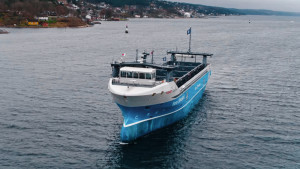Uncle Sam
How do we, here in Europe, see the USA? As a friend? As an ally? Or as a competitor? The GNP of the EU in 2022 amounted to approx. 16.6 trillion US dollars. That of the USA (in 2021) was 23 trillion US dollars, so we can say that the two are in the same league economically. In military terms, however, the EU is a pygmy compared to the US. Ten years ago, Europe's military weakness might not have been considered important. Today, with China and Russia assuring each other of their "lifelong friendship", we should think about it. Today there is a war in Ukraine and nobody knows how it will end. It is likely, however, that the Russians would have already conquered the country if Ukraine had not been supported militarily. "Uncle Sam" is a friend and ally in Ukraine, but the USA is also a competitor. Last year, President Biden introduced the so-called Inflation Reduction Act (IRA). This is a misnomer.
In reality, it created a huge US government subsidy - almost 400 billion dollars - for "green investments". The terms of this program are so attractive that a number of European companies, including those from Germany, have decided to make their planned new investments in the US rather than in Europe. Among these companies were also some that changed their plans and moved to the US instead of manufacturing electric cars here in the EU. In all countries, politicians and economists are on the lookout for "unfair competition" and many have no doubt that the IRA is creating a playing field that is no longer "level". Brussels is now considering alternative subsidy schemes. In this respect, "Uncle Sam" has not exactly proved to be a friend.
So much for the US on the international stage. I won't say anything here about the growing animosity between the US and China. But within the US itself, there are many who are deeply unhappy with the political situation, even though the economy is reasonably healthy. In November next year, Americans will elect the next president. Joe Biden has already announced that he will stand for re-election. He would then be 82 years old - by far the oldest president in US history, and many have wondered whether this makes sense. Biden has shown signs of "absent-mindedness" in recent years. Currently, no one in the Democratic Party seems willing to challenge Joe Biden. There are several contenders among the Republicans. Donald Trump would be 78 years old if elected, younger than Biden, but still at an age when most people are long retired. As I write this, it is possible that Trump is facing serious criminal charges and - theoretically - could even go to jail. Donald Trump has never accepted that he suffered a defeat in the last election. He continues to claim that victory was "stolen" from him - but he has no evidence to support this claim. Tragically, some 20 million Republican voters also believe this and therefore think the last election was unfair. This bitterness persists and is damaging the health of American democracy. In the 80 or so years of US political history, the Republican party has always been somewhat "isolationist". In other words, it has been unwilling to act as the "world's policeman" or get involved in world politics. A strong contender for the Republican nomination is Ron de Santis, the governor of Florida. De Santis recently made headlines when he described the war in Ukraine as a "territorial dispute" rather than a war and declared that the US should not get involved. This is a serious warning for us in Europe. Last but not least, the US is now torn by the issue of abortion. In 1973, the US Supreme Court laid down the law in the famous "Roe vs. Wade" case, which was generally accepted. But last year, Republican judges overturned that law, and the entire issue of abortion was sent back to each of the 50 states. Activists in Texas are trying to impose their extreme views across the US. The whole issue is - as most will agree - a delicate and sensitive one. I believe that here in Europe we have generally found a sensible solution. But in the US, it has again become a bitterly contested issue. Uncle Sam is a friend and ally. But sometimes also a difficult neighbor.
Space travel is getting cheaper and cheaper
 Fig. 1: The Stargate additive 3D metal printerThecost of launching satellites or other missions into space is falling steadily. A major breakthrough was achieved a few years ago with the successful development of reusable rockets, in which the lower first stage can return to earth by parachute and then be used a second or perhaps even a third time. A few weeks ago, another milestone in space technology was reached. Seven years after co-founding Relativity Space in a small rented office in Seattle, 32-year-old Tim Ellis watched his Terran 1 - the world's first 3D-printed rocket - make its maiden flight from Cape Canaveral in Florida. From an aerospace perspective, the test flight was a "successful failure" as Terran 1 did not reach orbit. However, it lifted off flawlessly from the launch pad and safely survived Max Q, the most dangerous and turbulent point of ascent, where dynamic forces are at their greatest and structural integrity is severely tested. When the main engines failed and the rocket's first stage separated and fell away, the staff were elated until, to their disappointment, the second stage failed and the rocket fell back to earth.
Fig. 1: The Stargate additive 3D metal printerThecost of launching satellites or other missions into space is falling steadily. A major breakthrough was achieved a few years ago with the successful development of reusable rockets, in which the lower first stage can return to earth by parachute and then be used a second or perhaps even a third time. A few weeks ago, another milestone in space technology was reached. Seven years after co-founding Relativity Space in a small rented office in Seattle, 32-year-old Tim Ellis watched his Terran 1 - the world's first 3D-printed rocket - make its maiden flight from Cape Canaveral in Florida. From an aerospace perspective, the test flight was a "successful failure" as Terran 1 did not reach orbit. However, it lifted off flawlessly from the launch pad and safely survived Max Q, the most dangerous and turbulent point of ascent, where dynamic forces are at their greatest and structural integrity is severely tested. When the main engines failed and the rocket's first stage separated and fell away, the staff were elated until, to their disappointment, the second stage failed and the rocket fell back to earth.
Mr. Ellis and Mr. Noone wanted to simplify and speed up the manufacturing process by combining 3D printing techniques, artificial intelligence and autonomous robots to build their vehicles. Their rockets are designed on computers and manufactured by the world's largest 3D metal printers - known as Stargate and patented by the company - which layer one metal alloy after another to build rockets in 60 days. The company is now valued at 4 billion US dollars and has almost 1000 employees. Figure 1 shows the latest version of the patented Stargate printer - version 4.
Thanks to this new technology, a complete rocket can be printed in 60 days. Of course, Terran 1 is relatively small compared to other recent rocket designs (see Figure 2). Terran 1 is 33 m high, has a diameter of 2.3 m and weighs 9,300 kg (without fuel). It is also the largest 3D-printed object in the world. Terran 1 is 85% 3D printed, and the company plans to print 95% of future versions. Terran 1's nine Aeon engines are also printed and, like many other space rockets, are powered by liquid oxygen and liquefied natural gas. Next year, the company plans to launch its new Terran R model, which can carry a payload of 20,000 kg into low Earth orbit and is also capable of reaching the Moon and Mars.
 Fig. 2: Terran 1 (right) is quite small compared to other rockets. It consists of only 1000 parts (conventionally > 100,000)
Fig. 2: Terran 1 (right) is quite small compared to other rockets. It consists of only 1000 parts (conventionally > 100,000)
Conclusion: This could not only be a revolution in rocket manufacturing, but also open up excellent new applications in 3D metal printing.
Better batteries
 Fig. 3: The Realme GT3 achieves unprecedented charging speedsThelatest development in cell phone batteries, announced recently, is a phone that can be fully charged in nine and a half minutes. This has sparked a race aimed at eliminating battery anxiety. The Realme GT3 (Fig. 3) is said to have the fastest charging technology in the world and can charge from zero to 50 % in four minutes and to 20 % in 80 seconds. A 30-second charge is enough for a two-hour call, three hours of music or 40 minutes of video streaming. Realme is now in a battle with the Redmi brand, which has unveiled technology that can fully charge a phone in five minutes, albeit not in a mass market product. The Redmi Note 12 Discovery phone can be fully charged in nine minutes, but has a lower battery capacity. In comparison, both the high-end iPhone 14 Pro and the Samsung Galaxy s23 take 30 minutes to reach a 50% charge and have smaller batteries than the GT3, which is hundreds of euros cheaper. Both brands are owned by Chinese companies, BBK and Xiaomi respectively. These innovations were recently unveiled at the Mobile World Congress in Barcelona. As modern cell phones offer more and more functions, their energy requirements have increased, which puts more strain on their batteries. The devices described are not yet on the market, but they point the way to the future.
Fig. 3: The Realme GT3 achieves unprecedented charging speedsThelatest development in cell phone batteries, announced recently, is a phone that can be fully charged in nine and a half minutes. This has sparked a race aimed at eliminating battery anxiety. The Realme GT3 (Fig. 3) is said to have the fastest charging technology in the world and can charge from zero to 50 % in four minutes and to 20 % in 80 seconds. A 30-second charge is enough for a two-hour call, three hours of music or 40 minutes of video streaming. Realme is now in a battle with the Redmi brand, which has unveiled technology that can fully charge a phone in five minutes, albeit not in a mass market product. The Redmi Note 12 Discovery phone can be fully charged in nine minutes, but has a lower battery capacity. In comparison, both the high-end iPhone 14 Pro and the Samsung Galaxy s23 take 30 minutes to reach a 50% charge and have smaller batteries than the GT3, which is hundreds of euros cheaper. Both brands are owned by Chinese companies, BBK and Xiaomi respectively. These innovations were recently unveiled at the Mobile World Congress in Barcelona. As modern cell phones offer more and more functions, their energy requirements have increased, which puts more strain on their batteries. The devices described are not yet on the market, but they point the way to the future.
Battery engineers working with cell phones are learning from their big brothers in the electric vehicle sector. The new OnePlus 11 concept phone, for example, has a liquid cooling system. A blue liquid is circulated around the back of the phone to lower the temperature by 2.1°C to give gamers better performance and increase charging speed without a noisy fan. Unfortunately, this only speeds up the charging process by up to 45 seconds, and the "concept" will probably never become a real product.
A happy marriage?
Across the developed world, there are thousands of data centers running hundreds, sometimes thousands of servers in a single building. Today, they are among the largest energy consumers of all - the estimated energy consumption of data centers in 2022 was around 200 TWh (terawatt hours). The procurement of such huge amounts of energy is a problem in itself. But almost all of this energy is lost as waste heat, and cooling these data centers is another major problem. For this reason, many data centers are located in cooler parts of the world, in caves or even in sealed units under the sea. In general, 'big is beautiful', but an interesting development in Devon, England, has taken a different approach. The company Deep Green(www.deepgreen.energy) has installed a small server near a public swimming pool and the heat it emits is used to heat the water. A heat exchanger then heats the pool water. The concept is generally not new - thousands of homes in Denmark and Sweden are heated with waste heat from data centers, although what happens in the summer is not clear to me. There are many thousands of industrial plants that use waste heat. Could they be combined with data centers?
Automated shipping
 Fig. 4: The MV Yara Birkeland could soon be sailing the world's oceans autonomously without any crewTheMV Yara Birkeland (Fig. 4) sails quietly through the Frierfjord in southern Norway like an ordinary ship. By the end of the year, however, the number of crew on board will be reduced from five to two. If all goes well, in two more years the ship's bridge will be removed and there will be no crew on board at all. Until then, Captain Svend Ødegård will be at the helm of the 80-meter-long ship. "We are taking big steps towards autonomy," he says. "There is a lot of technology installed on board that is not available on other ships." Ultimately, the Yara Birkeland will navigate with the help of sensors such as radar and cameras, which feed data to an artificial intelligence system that recognizes and classifies obstacles on the water. "With cameras on the side, bow and stern of the ship, the ship is virtually aware of the situation it is in," explains the captain. "It can decide whether we need to change course because something is in the way." The captain's task will shift to the mainland, to an operations center more than 80 kilometers away, where several ships can possibly be monitored simultaneously. If necessary, the human can intervene by sending commands to change speed and course.
Fig. 4: The MV Yara Birkeland could soon be sailing the world's oceans autonomously without any crewTheMV Yara Birkeland (Fig. 4) sails quietly through the Frierfjord in southern Norway like an ordinary ship. By the end of the year, however, the number of crew on board will be reduced from five to two. If all goes well, in two more years the ship's bridge will be removed and there will be no crew on board at all. Until then, Captain Svend Ødegård will be at the helm of the 80-meter-long ship. "We are taking big steps towards autonomy," he says. "There is a lot of technology installed on board that is not available on other ships." Ultimately, the Yara Birkeland will navigate with the help of sensors such as radar and cameras, which feed data to an artificial intelligence system that recognizes and classifies obstacles on the water. "With cameras on the side, bow and stern of the ship, the ship is virtually aware of the situation it is in," explains the captain. "It can decide whether we need to change course because something is in the way." The captain's task will shift to the mainland, to an operations center more than 80 kilometers away, where several ships can possibly be monitored simultaneously. If necessary, the human can intervene by sending commands to change speed and course.
The Yara Birkeland can carry up to 100 containers and is owned by fertilizer giant Yara. Over the past few months, the ship has traveled twice a week from the company's huge facility near Porsgrunn to the port of Brevik, collecting data along the 13 km route. This bold experiment has huge implications. Autonomous ships open up possibilities for new designs. Without a crew, more capacity can be made available for goods, as living quarters, galley, heating, air conditioning and other systems are not needed. Without a human crew on board, there are also major cost savings. The long-term goal is to have a small shore-based team operating a series of automated vessels from a control room.
"Ships that operate on short, regular and fixed routes offer the best opportunities to introduce autonomous ship technologies," says Sinikka Hartonen, Secretary General of the One Sea Association, an association of shipping companies and experts working on autonomy.
Automated shipping - a growing trend
Yara Birkeland's experiment is only the latest of its kind. In January 2022, Japanese shipbuilder Mitsubishi Heavy Industries (MHI) announced the completion of what it claims was the world's first demonstration of fully autonomous navigation using a large car ferry. The test took place off the coast of Shinmoji in Kitakyushu City, Japan, in support of Meguri 2040, a project supported by the Nippon Foundation to promote the development of fully autonomous vessels.
According to MHI, the test demonstrated the world's first fully autonomous navigation system on board a 222-meter-long ferry with autonomous docking and casting off in port, turning and reversing movements and high-speed navigation at up to 26 knots. Other new technologies for fully autonomous operation include sensors to detect other ships using infrared cameras, a remote monitoring system for the engines and a sophisticated cyber security system. In June 2022, Avikus, a subsidiary of HD Hyundai, reported the successful voyage of the liquefied natural gas tanker Prism Courage from Freeport in the US state of Texas to the South Korean Boryeong LNG terminal through the Panama Canal. The 33-day voyage covered around 10,800 nautical miles, half of which was navigated autonomously using Avikus' HiNAS 2.0 technology.
In Norway, two battery-powered autonomous barges "Marit" and "Therese" began their daily journey through the Oslo Fjord last September to transport food for the food company Asko. Like the Yara Birkeland, they will initially have a small human crew before becoming fully autonomous after about a year. DB Schenker is another company that announced last year that it would be building an autonomous, zero-emission container ship for coastal transport in Norway together with Ekornes ASA.
Kongsberg already manufactures autonomous underwater vehicles (AUVs) that mainly perform seabed mapping tasks for customers in the offshore energy, marine research and defense sectors. Their website www.kongsberg.com is well worth a read. Recently, the company delivered an 8-meter unmanned underwater vehicle (USV) that uses acoustic sonar to detect fish stocks and navigates via AI, cameras, radar and GPS.
"They are also supervised by humans who can intervene. But they are completely autonomous," says Bjørn Jalving, Senior Vice President of Technology at Kongsberg, about the autonomous vessels. Kongsberg is in the process of further developing the technology for larger vessels. "Ultimately, I think the limits will not be technical, but about ensuring safety in accordance with regulations and enabling operators to do good business," says Jalving. A big incentive for shipping companies is, of course, the cost saved by not having a crew on board. One team could potentially monitor several ships, says Jalving. It's also safer for the crew to be on land than at sea.
While the technology is being developed, there are also legal issues. Over the centuries, national and international maritime law has evolved, but always under the assumption that all sea-going vessels have a human crew. All ships must be insured, and insurance companies also assume the presence of people on board. It is obvious that new legal systems will be required in addition to the technology.
Conclusion: We are seeing the development of autonomous cars, trucks and trains. However, experts believe that autonomous ships will be the first to see serious commercial use. Today, there are more than 50,000 seaworthy merchant ships with over 2 million crew members. What impact will automation have on them?
AI in the news
Our news media has been full of reports about the chatbot GPT in recent weeks. What are the implications - medium and long term? The major investment bank Goldman Sachs recently made a prediction that around 300 million jobs could be lost. The report predicts that up to 25% of jobs in the US and Europe could disappear, but at the same time acknowledges that new jobs could also be created. In the long term, it is estimated that the global economy could grow by 7% as a result. The report notes that the impact of AI will vary across sectors - 46% of tasks in administration and 44% in the legal professions and 37% in engineering could be automated, but only 6% in construction and 4% in maintenance. Journalists and those working in advertising could be heavily affected. Cab drivers and truck drivers could also disappear. I have written about maritime transport. Today we see a growing number of chatbots. The best known is ChatGPT. Microsoft has introduced Bing ChatGPT. For businesses, there's Jasper GPT, and then there's YouChat GPT and Chatsonic GPT, produced by Writesonic. There are or will certainly be many more. Graphic designers and musicians also fear for their future. There are many reports of chatbots successfully passing exams, other reports of chatbots asking someone to commit suicide. Experts such as Professor Carl Benedikt Frey, Director of the Oxford Martin School at the University of Oxford, agree: we simply cannot know what the future will look like. And in our industry? There will undoubtedly be changes in the front office, where documents are created and processed. But in the companies themselves? I think we and our sons and daughters will continue to work for many decades to come.
Aerogels - the wonder material of insulation
Aerogels have insulated components of rovers sent to Mars, they have extracted toxic pollutants from water, and some even speculate that the US military has incorporated aerogels into nuclear warheads. Aerogel is often referred to as the most effective insulating material known to science. Although aerogel strips or panels have been used in buildings for decades, this type of insulation remains an underutilized and quite expensive option for those looking to reduce heat loss. In the late 1920s or early 1930s - no one is quite sure - two chemical engineers in the USA developed a method of removing the liquid from a silica gel substance to create an ultra-light, highly porous structure, which one of the engineers, Steven Kistler, named aerogel. These are foams with an extraordinarily low density that are filled with microscopically small pores - some aerogels consist of 99% air. Aerogel is also known as "frozen smoke", and in pictures it can look like an ethereal, half-gaseous, half-solid piece of matter. However, the complicated structure and the large volume of air inside make aerogel a uniquely good insulator. The world's largest manufacturer is Aspen Aerogels in the USA, whose product silica aerogel is combined with a reinforcing fiber in a matte-like composite. The problem with this excellent insulating material is that it is so expensive - it costs about 55 euros/m2 for a 10 mm thick board - making it about five times more expensive than a 30 mm thick polystyrene board or similar insulation. Companies around the world are now trying to develop a similar material that costs less. If they are successful, there will be no shortage of customers.


